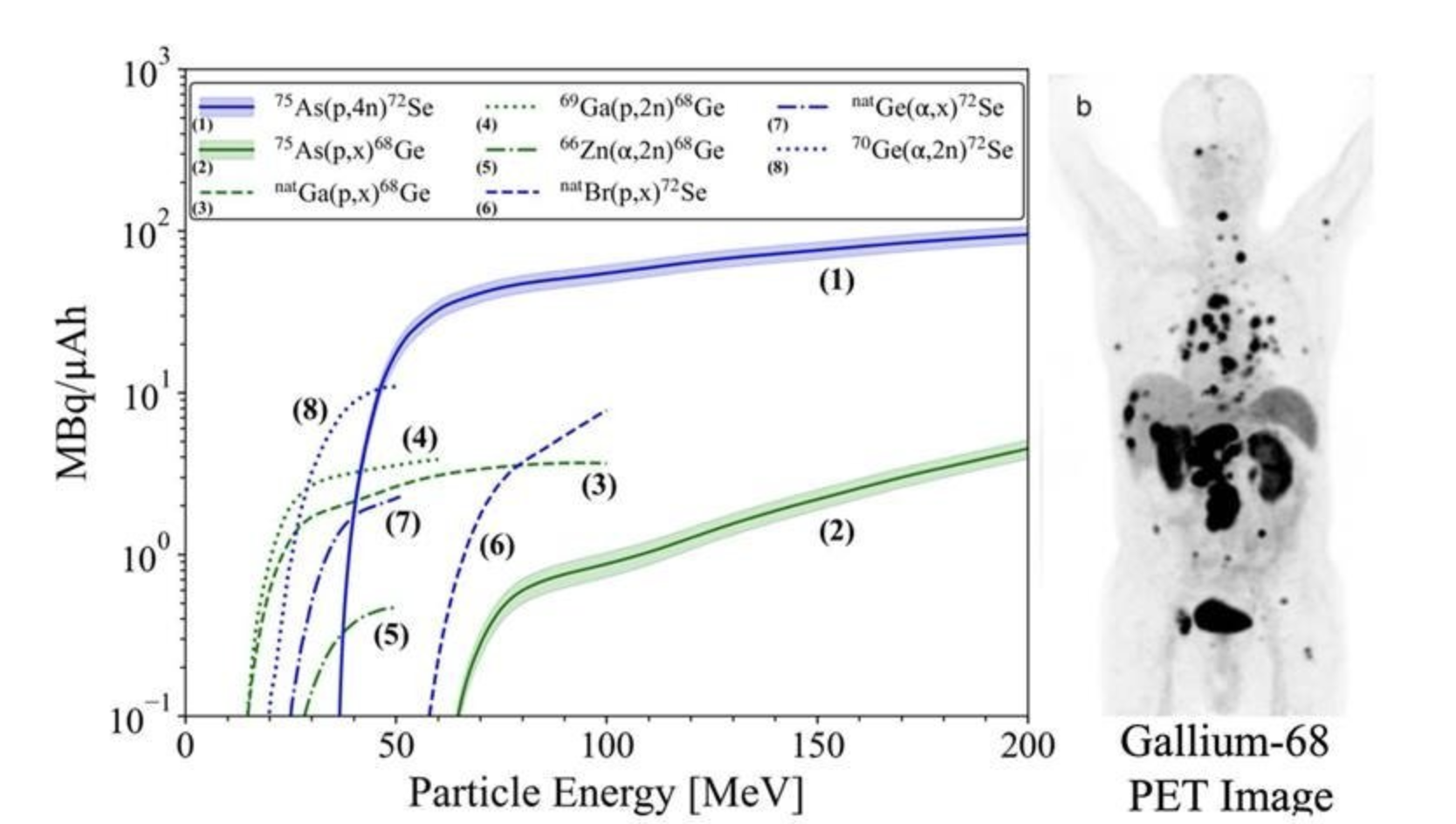Fighting Cancer on Earth and in Space Using High-Energy Protons

Left: production rate as a function of proton energy of parent radioisotopes selenium-72 (Se-72) (1) & germanium-68 (Ge-68) (2). Right, a Positron Emission Tomography (PET) image of a patient with metastatic colon cancer, obtained using gallium-68 (Ga-68)
Scientists on Earth use high-energy protons to create isotopes to detect and treat cancer. In space, however, these same high-energy protons can pose a risk to spacecraft and the health of the astronauts traveling in them. These risks mean spacecraft must have protective shielding. Unfortunately, scientists have a great deal of uncertainty concerning the risks posed by these high-energy protons. To learn more about the risks and about using these protons to produce isotopes, scientists measured the cross sections (probabilities) for high-energy proton reactions used to produce important new radiopharmaceuticals.




